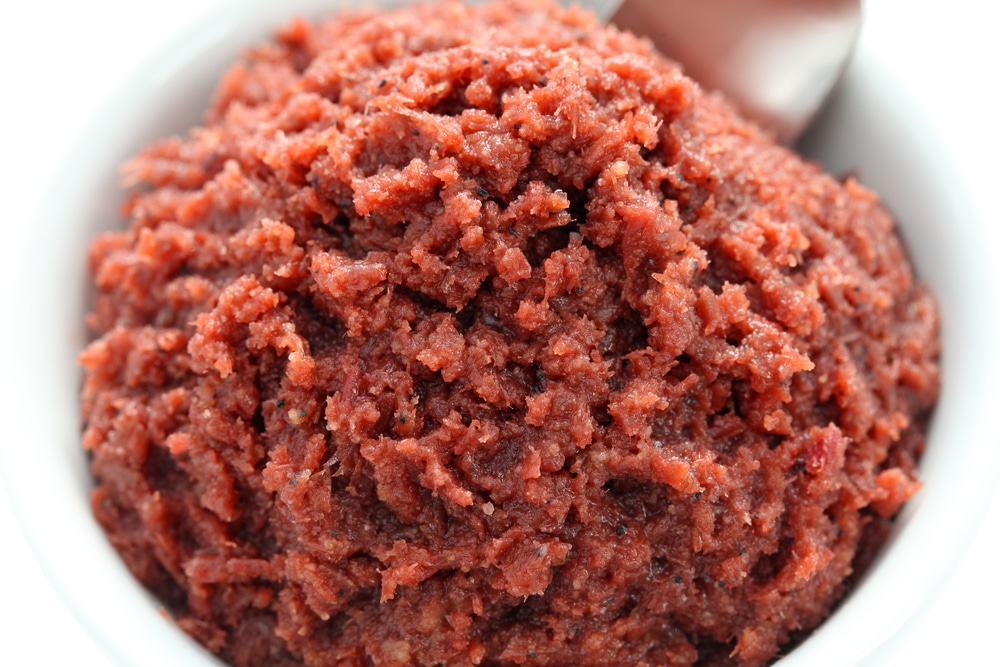
Bagoong is a well-known condiment that’s native to the Philippines and is usually made from fermented fish, shrimp paste, or krill. To make this condiment, the bagoong fish is used, and the ingredients are salted and fermented. Once prepared, it can be used as a seasoning. However, many people have a hard time finding bagoong, which is why we are listing down some substitutes with you!
Bagoong Substitutes
- Belecan
It is basically the shrimp paste that’s widely used in Asian and Southeast Asian cuisines. It is known to add a punch of salty and umami flavors to recipes. In addition, the paste has a strong fishy flavor and aroma. It’s one of the most useful ingredients, but it is very salty, so you have to consider your dietary restrictions. Belecan is made with the fermentation of shrimps or prawns, which results in a deep umami flavor. The most surprising fact is that many people dislike its smell but are fond of the flavor. So, it’s recommended that you roast the paste a bit before use as it helps fix the smell.
- Fish Sauce
This is an everyday and easy-to-find ingredient that is easily available in the majority of supermarkets. In particular, you will be able to find it in Asian grocery stores. It has a strong salty flavor as it is made from fermented seafood, which is why it’s a great replacement for bagoong. In addition, it can be used in place of shrimp paste. Keep in mind that it won’t mimic bagoong’s flavor accurately, but it has a pungent flavor, which makes it suitable for cooking recipes. Having said that, if the recipe calls for one teaspoon of bagoong, you can add two tablespoons of fish sauce to replicate the flavor and aroma.
- Anchovies
When it comes down to anchovies, they add a fishy and salty flavor to the recipe, and everyone loves the umami flavor that it adds to the food. It wouldn’t be wrong to say that anchovies add a mouth-watering flavor to the recipe, but it’s recommended that you cook the fish and process it into the paste with a bit of water to achieve the desired consistency. It’s a useful option, and its consistency makes it suitable for flavoring sautéed vegetables, soups, and sauces. On the other hand, you need to remember that its pungency might be less as compared to other substitutes, but it has umami notes.
- Miso
If you want to replace bagoong in the recipes because you are allergic to seafood and are following the vegan diet, you can opt for miso. This is a bean paste that’s undergone fermentations to create a complex flavor. In particular, miso has umami and salty flavor. However, to replace bagoong, it’s recommended that you add dark miso as white miso will disturb the appearance of the food.
- Soy Sauce
Soy sauce is one of the most reliable and convenient substitutes for bagoong. When used in a pinch, it can add bitter and salty flavor to the recipe. Keep in mind that its flavor is less pungent than bagoong, which is why you will have to add extra to mimic the flavor. Still, adding too much soy sauce will darken the dish, so add it in moderation.
- Bonito Flakes
These flakes are basically Japanese, which are basically the small pieces of skipjack tuna and dried bonito. These flakes have a fishy flavor as well as an intense savory tone. However, the pungency might be less as compared to bagoong, which is why they can be added to noodles, casseroles, and stocks. In addition, the texture is different, so you have to consider the dish’s final form.
- Tahini
Tahini is basically a paste that’s made from ground sesame seeds. Tahini looks like miso paste with similar consistency, which is why it can be substituted for bagoong. It has a nuttier and rich flavor, so you might not get the saltiness. It can add body to the dish, but you should add soy sauce to add umami tones to the sauce. Tahini is extremely easy to find in grocery stores and helps achieve the thick consistency in the recipe. In addition to soy sauce, you can also add fish sauce to add the fish-like flavor. All in all, you can use tahini in marinades, dressings, and soups.